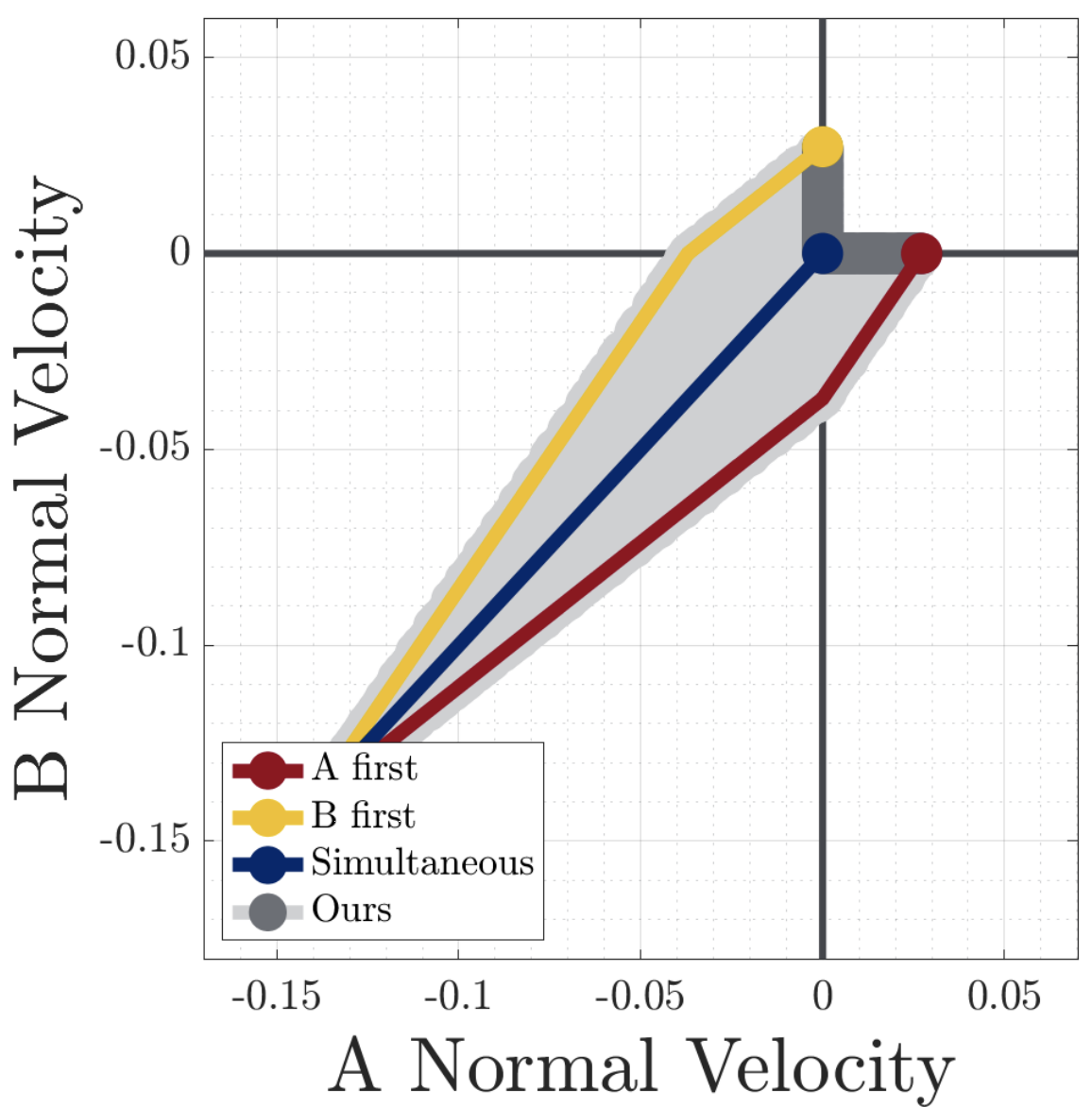Modeling piecewise affine dynamics is incredibly difficult, especially when you have a lot of pieces! Here, we make some significant headway by recasting the problem as learning a linear complementarity problem (LCP), which can represent exponentially more pieces than the number of learned parameters. Furthermore, the LCP structure exposes hidden complementarity variables, which can be used to construct a twice-differentiable loss, despite the model’s non-smooth predictions.
Read MoreThere are many nuanced and complicated discrepancies that contribute to the simulation-to-reality gap in robotics, but one is fairly basic: some models are unable to predict any outcome from some initial conditions (non-existence), while in reality, some systems produce many different outcomes from indistinguishably similar conditions (non-uniqueness). We derive models with existence guarantees by capturing this non-uniqueness as a differential inclusion.
Read MoreLearning to predict robots’ motion through impact is hard—but how hard? and why? We isolate near-discontinuity, driven by material stiffness, as a key culprit; and we study how 3 distinct phenomena contribute to poor prediction at test time: chaos, under-fitting, and poor generalization.
Paper - Website - Video - Code
Read MoreCommon methods for learning robot dynamics assume motion is continuous, causing unrealistic model predictions for systems undergoing discontinuous impact and stiction behavior. We resolve this conflict by implicitly encoding these discontinuities as inter-body signed distance and contact-frame Jacobians. Our method, ContactNets, can predict realistic impact, non-penetration, and stiction when trained on 60 seconds of real-world data.
Paper - Video - CoRL Talk (5 min) - Code
Read MoreAlmost every model of contact for robotics has some issue with predicting behaviors when multiple frictional collisions occur simultaneously between rigid bodies—either as a lack of proven existence of solutions or lack of ability to capture the non-unique behaviors observable in simplest of real-world systems. We derive and characterize a novel model of simultaneous frictional impact that resolves both of these issues.
Paper - DWC Talk (15 min) - RSS Talk (5 min) - Poster
Read MoreWhile quasi-static models are often used for non-prehensile manipulation, they broadly remain incapable of capturing grasping and jamming behaviors, which are essential for dexterous manipulation. We rectify these issues by explicitly modeling the internal dynamics of the manipulator, allowing for guaranteed existence of solutions for arbitrary manipulator commands. We formulate both continuous and time-stepping dynamics as tractable Linear Complementarity Problems.
Paper - Video - WAFR Talk (10 min) - Code
Read More




